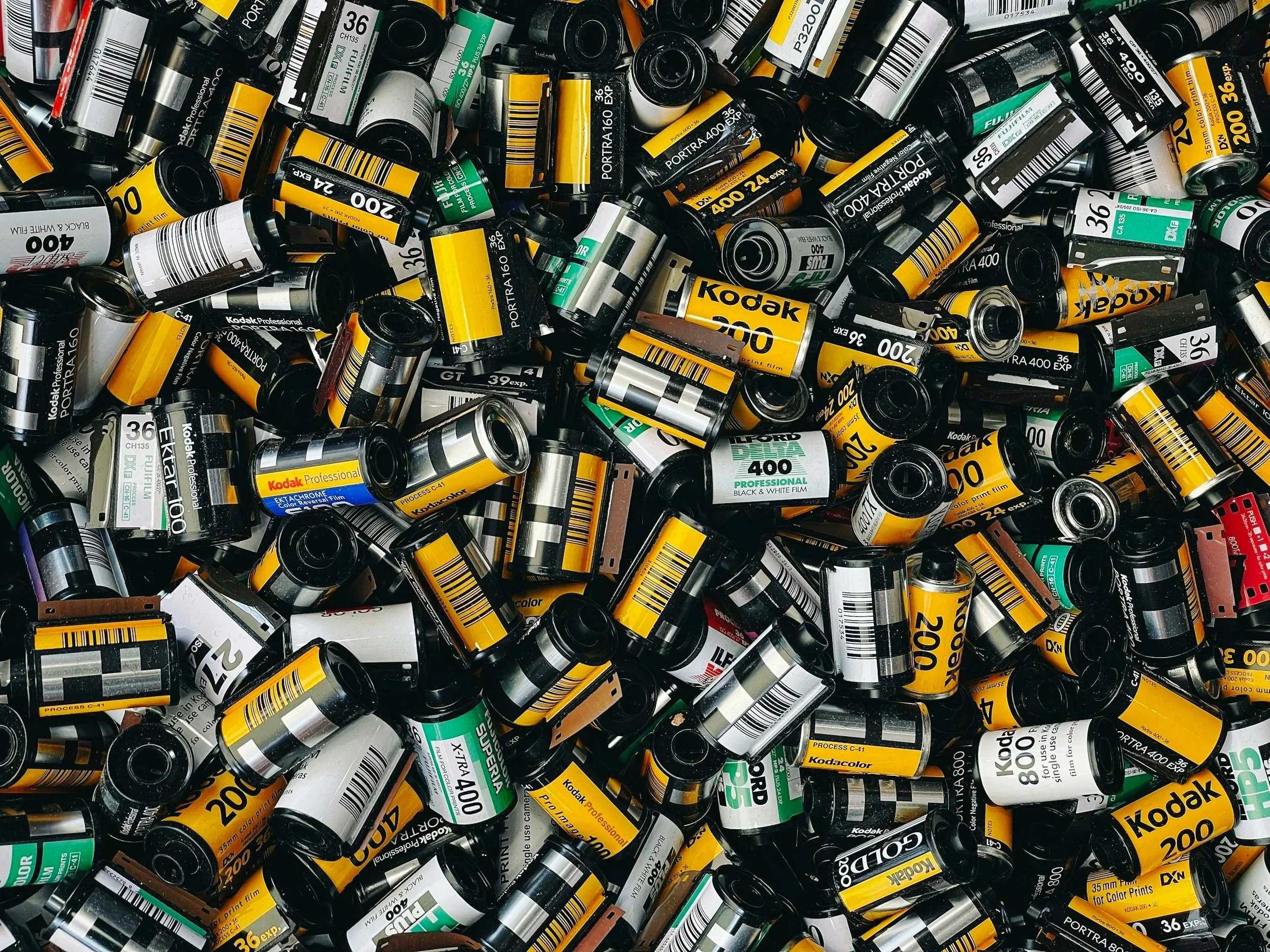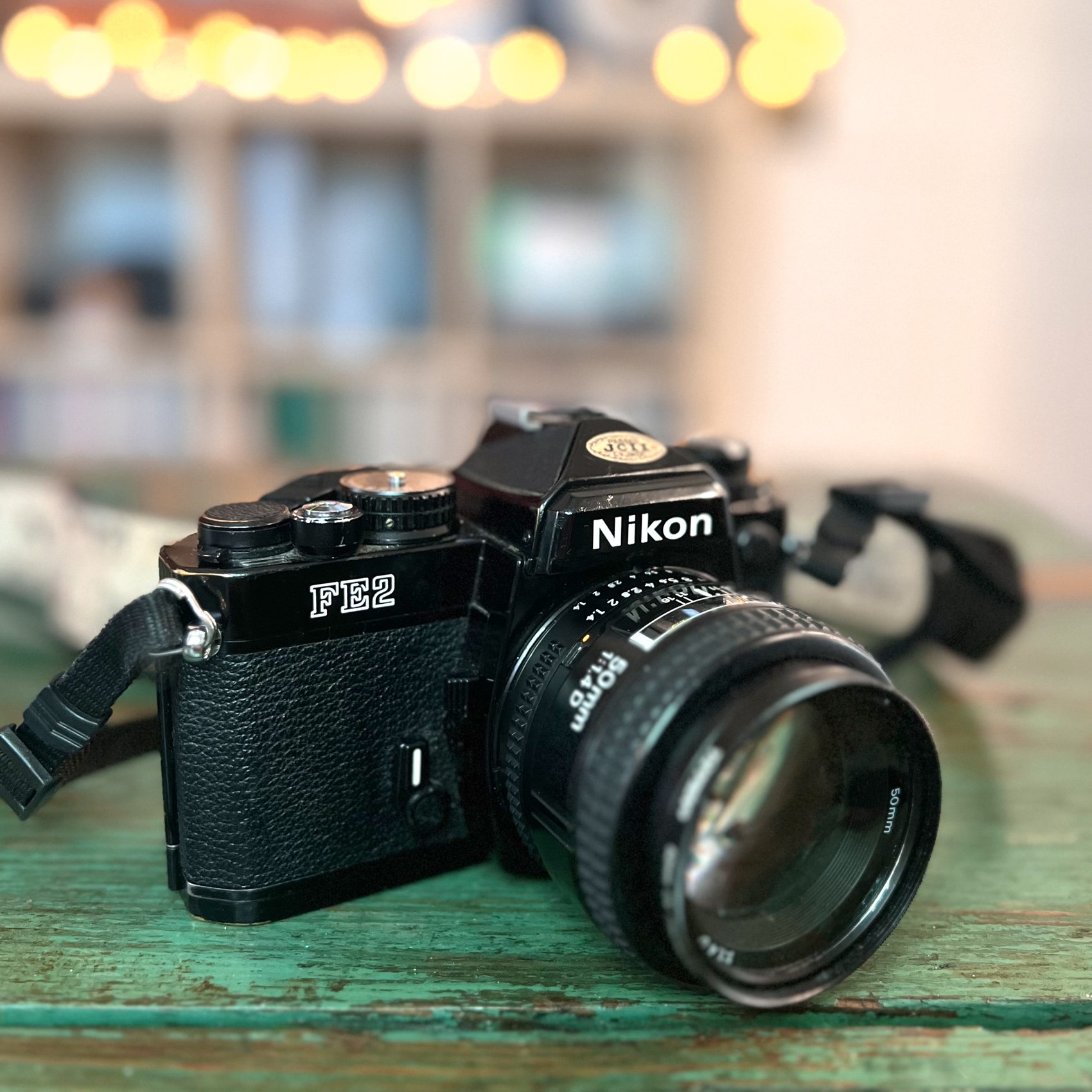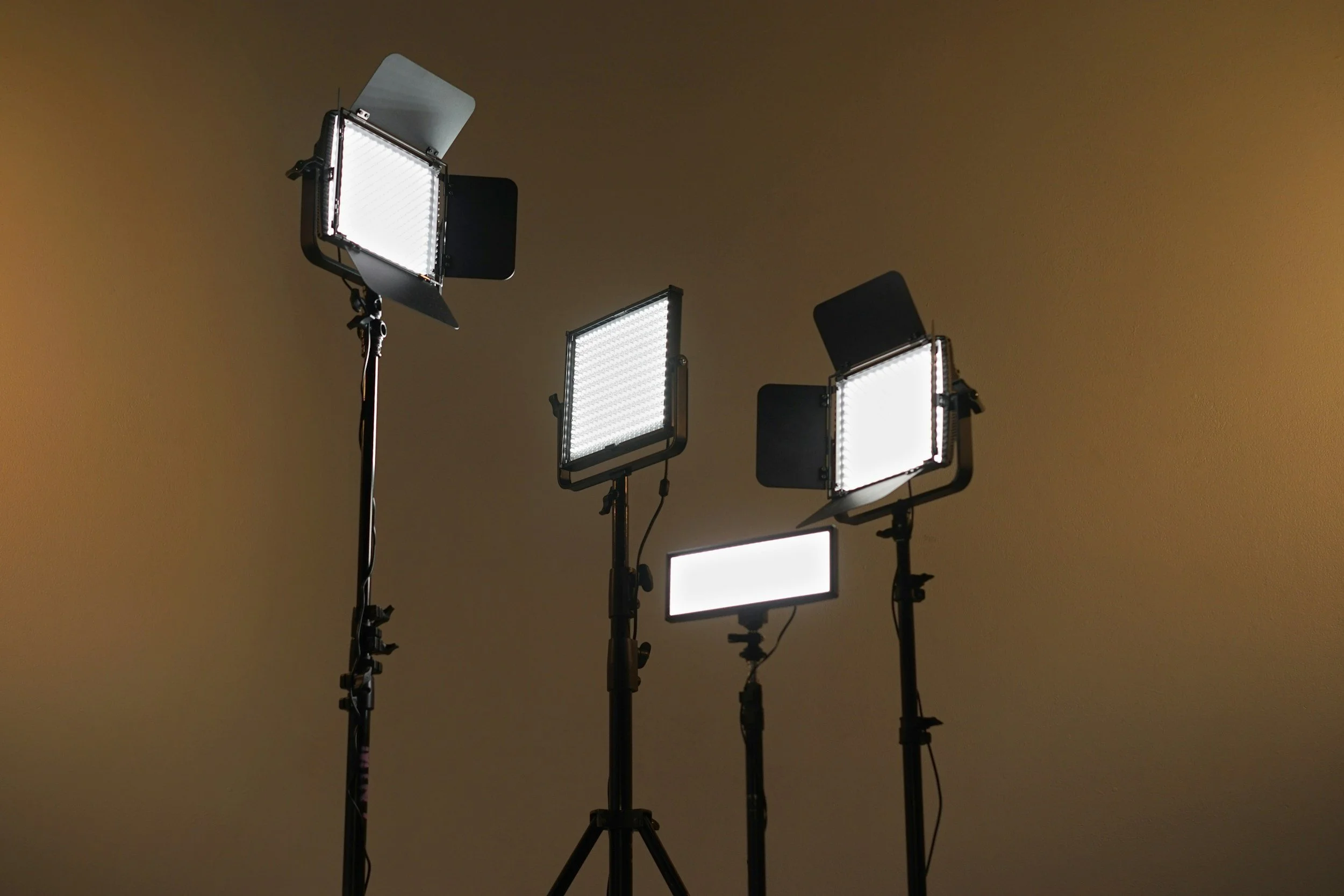I can’t believe it’s already here - it’s Gift Guide time! The holidays are swiftly approaching (help!) and I don’t know about you, but I always have a seriously difficult time trying to figure out what to buy everyone in my life. But there is one thing I do know, and that’s what I would love to have gifted to me as a photographer. So, I’m hoping that imparting some of my wisdom in the photography world will help you make the perfect gift choice for the photography lover in your life! All of these gift ideas are meant for photographers but can definitely apply to videographers and artists alike. Just because they consider themselves to belong in one specific category of art doesn’t mean they couldn’t use the creative tools on this list to enhance their artwork. So, without further ado, here are 15 Unique Gifts for Photographers in 2025!
(By using the affiliate links and/or codes in this blog post it supports Myles Katherine Photography. We may get a small kick back by you doing so.)
1. HOLGA GCFN OR DIANA F+
I will always put a Holga or a Diana F+ in a gift guide, because I think a toy camera is a perfect way to challenge the artist in your life in a cute and creative way. These cameras are funky, adorable, colorful and so much fun to use. Just remember to pick up some 120 film to go with it! I recommend Kodak Portra 400 or Kodak Gold 200 to start with. :) I have a full blog post all about the Holga GCFN here or the Diana F+ here if you want to read more about them! There is also a cute little 35 mm Holga BC camera if you know the photographer in your life prefers 35 mm.
WHERE TO BUY
HOLGA GCFN ON AMAZOn
HOLGA GCFN ON B&H PHOTO
DIANA F+ ON B&H PHOTO
2. HANDMADE CAMERA STRAP (ETSY)
There was one Christmas when my mom bought me a handmade camera strap with cats on it, and it has become my all-time favorite strap. I keep it on my Nikon FE2 camera and it just makes me smile every time I pick up my camera. It’s also such a great idea to support an artist on Etsy by buying one of their handmade camera strap like this one. Think of something your photographer friend likes, whether it’s cats, dogs, avocados, etc, and see if you have find one on Etsy!
WHERE TO BUY
EtSY HANDMADE CAMeRA STRAPS
3. HARLOWE CREATIVE ACCESSORIES
I recently learned about this company while I was in NYC at the BILD Expo with B&H Photo. This company makes so many fun and creative accessories to help inspire photographers. Personally, I’d go for the Harlowe Gobo and Lens FX Creator Kit (unique filters for creating interesting photos) or the Harlowe Mini II Bi-Color LED Light Standard Kit (a portable lighting kit that is super small and can go anywhere with you).
WHERE TO BUY
B&H Photo - Harlowe Gobo and Lens FX Creator Kit
B&H Photo - Harlowe Mini II Bi-Color LED Light Standard Kit
4. LIGHT PAINTING WAND
There are so many uses for a light wand. You could create shapes while using a slow shutter speed, or you can use it in the studio to create colorful lighting scenarios. Instead of buying an expensive studio light with gels to change the color, you can just use a light wand like this one that has endless color options!
WHERE TO BUY
Amazon
B&H Photo
5. FILM SCANNER
It’s on my list this year to get myself a new 35 mm film scanner. I currently use an Epson Perfection V750, which is great for scanning 120 film, but I’d love to have a designated 35 mm film scanner like this one. It’s way faster and easier to manage, and takes up less space on my desk. Plus, this Kodak one lets you scan 35 mm, 120, and 110 film and slides so you can restore those old film photos your parents might have taken back in the day!
WHERE TO BUY
Amazon
B&H Photo
6. POLAROID GO OR POLAROID NOW & FILM
I actually just picked up a Polaroid Now camera and I love it. It’s super simple to use and works a little better than my vintage Polaroid 600 cameras. Plus, it takes both 600 film and i-Type film (which is a little cheaper). Not to mention, it’s incredibly cute sitting up on your shelf. Every photographer should have a polaroid camera, it’s just a right of passage!
WHERE TO BUY
Polaroid Now ON AMAZON
POLAROID NOW I-TYPE FILM ON AMAZON
Polaroid Go ON AMAZON
POLAROID GO FILM ON AMAZON
POLAROID NOW GIFT SET ON POLAROID.COM
POLAROID GO GIFT SET ON POLAROID.COM
7. NEEWER RING LIGHT
I bring a ring light with me everywhere if I’m traveling for work. It’s a heck of a lot easier than carrying around a studio lighting kit, and is the perfect fill light if you’re working in a space that isn’t quite bright enough. Plus, it’s great for capturing makeup and glam looks, and creates a nice even lighting over your subject. I’ll often throw a white sheet over it to diffuse the lighting even more, especially for video. But it’s nice because you can also change the color temperature and brightness! Not to mention, they are super affordable!
WHERE TO BUY
Amazon
B&H PHOTO
8. INSTANT FILM PRINTER - INSTAX MINI LINK
These days, we take so many photos on our iPhones but we never print them! This little printer is perfect because you can create little mini polaroids with photos from your iPhone. It’s perfect because the prints are great for giving to friends and family and look so cute in a scrapbook or hanging on the fridge. I print polaroids all the time because it’s just a nice way to keep the memories alive instead of letting your photos disappear on your hard drive.
WHERE TO BUY
Amazon
B&H PHOTO
9. 35 MM & 120 FILM ROLLS
If the photographer in your life shoots film, then 35 mm is your safest best. But if you know for a fact that they’re into 120 film (medium format), then definitely help them out and buy a few rolls! Film is expensive for photographers to buy constantly but is a great gift! A roll of 35 mm film costs anywhere from $5-20, and 120 film is usually $8-20. You can’t go wrong with Kodak Portra 400 in 35 mm or 120, or Kodak Gold 200 in 35 mm or 120. You can also read more on my blog. I have a post about 5 Unique Films To Make Your Photos More Interesting or The Best Color Film For 35 mm Cameras.
WHERE TO BUY
Kodak Portra 400 35 mm film ON B&H PHOTO
Kodak Portra 400 120 film on B&H Photo
KODAK GOLD 200 35 MM FILM ON AMAZON
KODAK GOLD 200 120 FILM ON B&H PHOTO
10. LEATHER OR VEGAN LEATHER CAMERA BAG
I just got a new camera bag last Christmas and it was a game changer. I’d been using the same ratty camera bag for over a decade, to the point that the zipper was broken and the fabric was tearing apart! There are finally some nice looking camera bags out there now. I personally love the brand Ona, but there are tons of other brands out there too, especially on Amazon. Here are a bunch that I’d recommend!
ONA THE CAPRI II CAMERA BAG IN ANTIQUE COGNAC LEATHER ON B&H PHOTO
VEGAN LEATHER CAMERA BACKPACK ON AMAZON
GILLIS LONDON GILLIS LONDON TRAFALGAR CAMERA BACKPACK
CWATCUN CANVAS CAMERA BACKPACK
CCWATCUN CAMERA BAG, RETRO CAMERA CROSSBODY CASE
JAEP CAMERA BACKPACK - WEATHER RESISTANT WAXED MEMORY CANVAS
11. VINTAGE CAMERA
Etsy is sort of a secret when it comes to shopping for vintage cameras. Instead of scouring through thrift stores to find a working camera, you can just browse through Etsy and find a seller that specializes in vintage cameras. I just bought a Ricoh 500GX on Etsy and I’m obsessed with it. You can check out my blog post about 10 Film Cameras I Recommend for Beginners if you’re looking for ideas. But the Canon AE-1 , Pentax K1000, Nikon FE or Nikon FE2 are great options! I always shop for vintage cameras on Etsy, KEH Camera, and eBay.
WHERE TO BUY
VINTAGE CANON AE-1 PROGRAM CAMERA ON ETSY
PENTAX K1000 ON KEH CAMERA
VINTAGE NIKON FE ON KEH CAMERA
VINTAGE NIKON FE2 ON EBAY
12. LIGHTROOM OR PHOTOSHOP SUBSCRIPTION
If the photographer in your life is just starting out, they probably haven’t officially invested in an editing program yet. Or if they have, I’m sure they’d appreciate a few extra months on their subscription that they wouldn’t have to pay for! Lightroom and Photoshop are sort of the standard for photo-editing, and are incredibly user-friendly and fun to experiment with. I’ve been using Lightroom and Photoshop together throughout my entire photography career for all of my editing!
WHERE TO BUY
LIGHTROOM ON Amazon
LIGHTROOM ON B&H Photo
PHOTOSHOP ON AMAZON
PHOTOSHOP ON B&H PHOTO
LIGHTROOM AND PHOTOSHOP PACKAGE ON AMAZON
13. PORTABLE LED PANEL
If you are looking for the perfect gift for a videographer, a portable LED panel is a great option. I’m not even a videographer and I’d love to have one of these! Sometimes the lighting just sucks and you need a little help. If the photographer in your life is a traveler, this one on Amazon is a great option because it includes a carrying case and lightweight stands. Or, if they tend to be in particularly rugged conditions, I’d recommend this kit from B&H Photo.
WHERE TO BUY
Amazon
B&H Photo
14. BACKBLAZE SUBSCRIPTION
I’ve convinced pretty much everyone in my life to purchase Backblaze. It’s essentially a cloud back-up service, but it backs up your entire computer and all of your hard drives. So, I never have to worry if my client’s photos are going to disappear if my house burns down. And you’re able to access your files from anywhere. For example, if you accidentally forget to drag a folder onto your computer for editing, you can just download it from your backblaze account and keep editing!
WHERE TO BUY
Get a free 14-day trial on Backblaze!
15. NEW CAMERA!
And of course, who wouldn’t want a new camera! Depending on which brand they prefer, here are a few great options that are new this year from each brand under $2000! I also have a full blog post with more detailed camera descriptions if you’d like to read more - Top 10 Most Desired Digital Cameras of 2025 Under $2500 | The Best Mirrorless Cameras on the Market.
WHERE TO BUY
Canon EOS R8 Mirrorless Camera with RF 24-50mm f/4.5-6.3 IS STM Lens
Nikon Z5 II WITH 24-50MM F/4-6.3 LENS
Panasonic Lumix S5 II WITH 20-60MM F/3.5-5.6 LENS
Sony A6700 WITH 18-135MM LENS
Fujifilm X100VI
HAPPY HOLIDAYS!
I hope this list helps you come up with a few gift ideas for the photographer or creative in your life. Or if you’re a photographer yourself, I hope this list reminds you to invest in your business and believe in yourself! I’ve been a full-time photographer since 2012 and it all started with my first Canon 5D Mark II. It truly only takes one amazing camera and one amazing artist to create a successful business.
If you’re looking for even more gift ideas, you can check out my previous gift guides here and here!
If you found this post helpful or inspiring, I’d love it if you considered signing up for my Patreon! For as little as $1 a month, you’ll get early access to all of my YouTube videos, plus tons of photos that I don’t post anywhere else. Depending on which tier you choose, you could also receive seasonal prints and/or discounts! I always use all of the proceeds towards cameras, film & processing. Find out more here!
If you have any questions, I’m always happy to help! You can contact me here, or leave a comment below! Thanks so much for stopping by! You can also check out my Amazon storefront for more camera/film recommendations. :) Have a magical day!
<3 Myles Katherine
































































